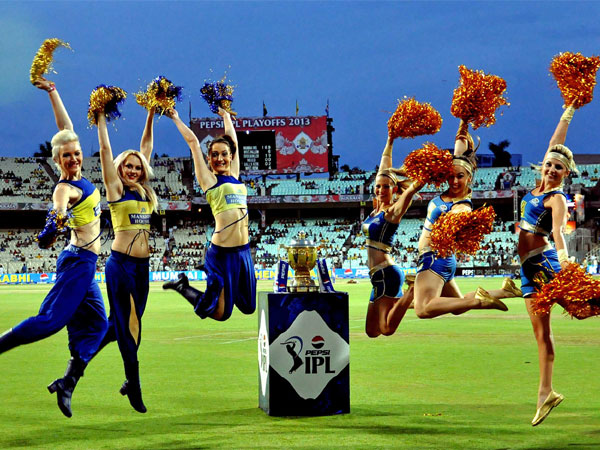
There are stories and stories about the Indian Premier League (IPL). Everyone associated with it has a story. And they are true stories. Even the best fiction writer could not have imagined the multiple twists and turns that has run through a tumultuous decade of cricket’s largest league.
Despite its humungous success, “The curse of the IPL” is the phrase used most often while referring to the league. Many a leading name in Indian business, sports, politics have been brought down to earth, whether in India or faraway London, as they struggled with the googlies and the wrong ones thrown in edition after edition.
Despite this, for reasons well-known, the IPL always emerged as a strong brand from each disastrous innings, and continued to attract huge broadcast rights and sponsorship fees. While ownership of a sports team is driven more by passion and ego, with return-on-investment not taking top priority, the IPL franchises have had a decent financial run so far. With a new broadcast partner, Star India, splurging over Rs 16,000 crore, and the mobile phone brand, Vivo, retaining the title sponsorship by agreeing to pay nearly Rs 450 crore every year, it couldn’t be better for an IPL team owner, who will now get a share of 50 per cent of these and other revenues from the Board for Control of Cricket in India (BCCI). The tragedy, however, is that apart from these numbers, nothing seems to have changed and neither are there any signs that it will. There were enough naysayers when the architect of the league, Lalit Modi, gathered owners and a broadcaster and unleashed the cheer girls on unsuspecting cricket lovers in 2008. While the players were hoisting the ball out of the ground, these pundits emerged periodically to shout down the league on TV channels every time a problem arose. And the IPL obliged by providing them with enough reasons.
Given the sensitivities involved with anything that we do in India, especially cricket and movies, it is understandable that it has taken these many years for the league to be well-entrenched into the sporting culture. IPL has single-handedly provided every other sport a lifeline and a blind replication of its template has worked for many.
Globally too, the IPL has been responsible for providing other cricketing boards a plan to leverage and monetise their strengths through T20 leagues. To the extent that Cricket South Africa (CSA) president, Chris Nenzani, recently met BCCI bosses to seek their expertise in running a similar league. Their T20 Global league was launched this year and was scheduled for November-December, but had to be cancelled for various reasons, leading to the exit of Haroon Lorgat, CSA’s CEO. IPL is in an enviable spot giving India the muscle to flex in the global cricketing community. More reason for the league to get its second act right by reinforcing its foundation, and then building on it.
A reason for worry is the lack of a long-term vision for the league as can be seen from last week’s meeting of owners. An example of that is the fact that the major point of discussion during the meeting was on the number of players that can be retained by a franchise. Since the 11th edition in 2018 is the beginning of a new era, it was always said that all the players would get into an auction pool so that every owner gets a chance at bidding for the best. When this rule was conceived, probably in 2008, nobody was thinking this far and had not understood its implications. One would have expected all teams to have rejected this clause by the beginning of the 11th season, because they would want to retain the maximum number of players from their squad which had served them for a decade, and around which they would have built a business.
But the ground reality is different. There is only one team which wants to retain five players, that too from a squad of 25-odd. The others want 4, 3, 2, 1, none — each one counting the number of good players/stars in their franchise and wanting a rule to retain only that many, thus not allowing the others to have an advantage by retaining more. So even if the final number decided is five, it doesn’t matter because only one team is going to do it. Most others are going to build brand new teams. In such a scenario, the league and the franchises are actually allowing teams to keep on experimenting till they hit the right combination. This is no good for the fans, and hence the league in the long run.
The 10 years have been a learning curve and much has been learnt. New game, new format, new rules and regulations, new money, new owners; everything and everyone has been tried and tested. And everyone who still continues to be associated with the league should heave a sigh of relief and consider themselves fortunate to have escaped unscathed or with minor bruises. But they can’t depend on luck to carry them through another decade. The fans, sponsors, broadcasters, authorities aren’t going to be indulgent for long. Just like the IPL has put forward a successful template that has been adopted by other sports in the country, it is necessary for the BCCI and IPL franchise owners to adapt best practices from global leagues and embrace them to be counted amongst the best globally. And there is no better time than now to start. All is forgotten and forgiven; but change for the better with the sport-lover as the focus. If this opportunity is lost and the league continues to indulge a super-club of a handful of owners, amongst whom also there is a pecking order, then don’t be astonished if the curse re-surfaces with a vengeance in the sequel.
The author is a co-founder of SportzPower



